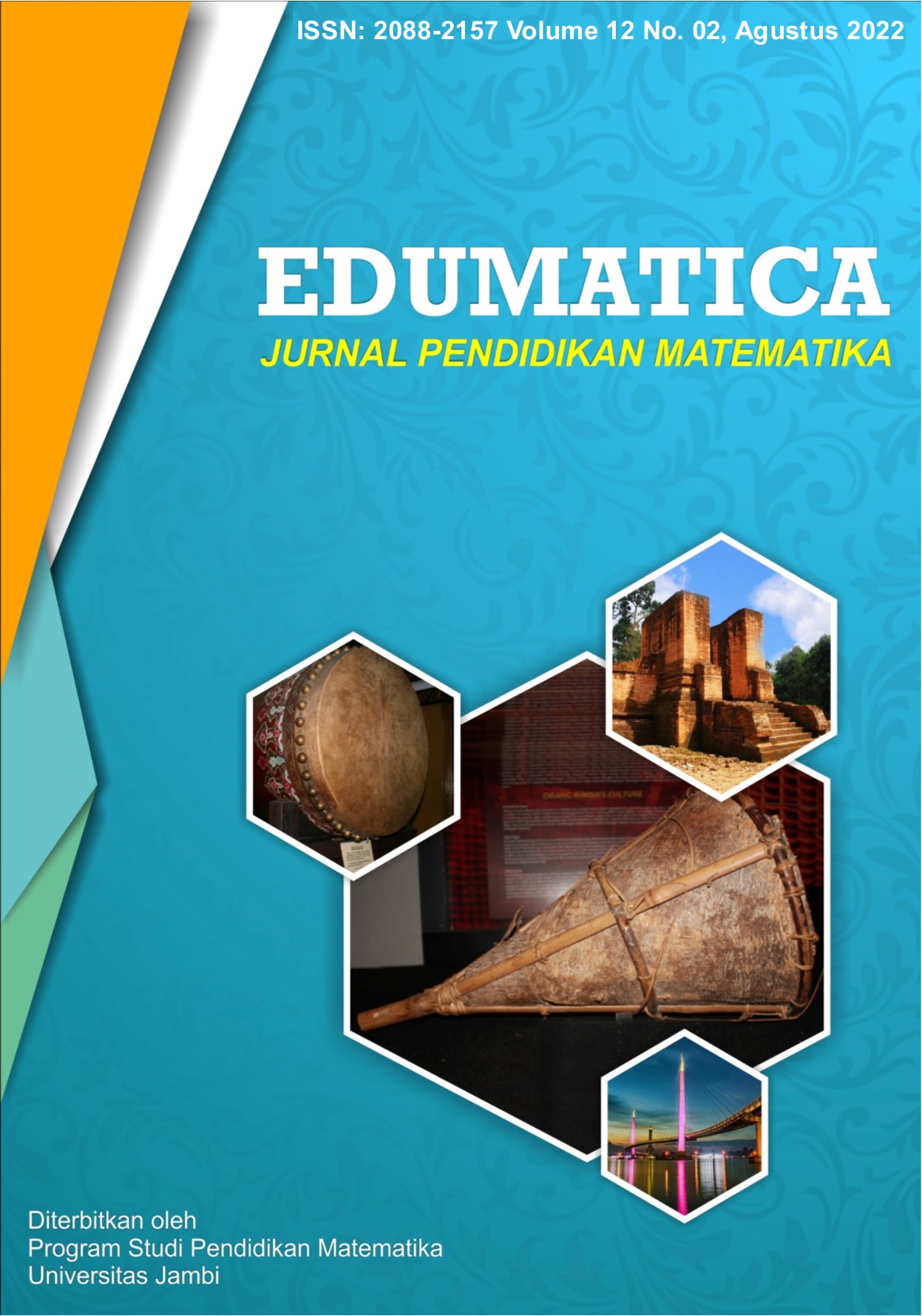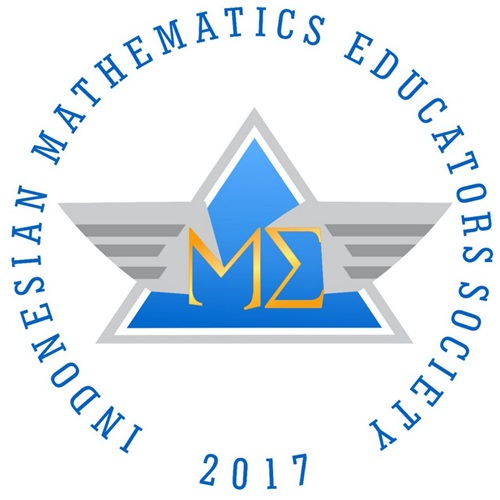Student Errors in Solving Number Patterns, Sequences, and Series HOTS Types Based on Newman's Theory in Terms of Gender
DOI:
https://doi.org/10.22437/edumatica.v12i02.15611Keywords:
gender, HOTS, Newman's theoryAbstract
This study aims to analyze the errors of students with HOTS abilities at high, medium and low levels and identify student errors in solving HOTS (Higher Order Thinking Skill) type questions in terms of gender. This type of research is qualitative with a case study approach. The research subjects were selected 3 male students and 3 female students, each of which the HOTS ability level was high, medium and low consisting of 2 students. Data collection techniques used HOTS-type tests and interviews. The analytical framework was developed based on Newman's theory of error categories. The data obtained were tested for validity through credibility, transferability, dependability, and confirmability tests. The results showed several differences in the types and percentages of errors made by male and female subjects in solving HOTS-type questions. The biggest mistakes made by both genders in the material of number patterns, sequences, and series are misunderstandings of 33.33%, followed by errors in determining the final answer of 23.02%, transformation errors of 22.22%, errors in the completion process of 20.63%, and finally, reading errors of 0.79%. It can be seen that the female gender makes more mistakes by 57.14% compared to the male gender by 41.86%.
Downloads
References
Abdullah, A. H., Abidin, N. L. Z., & Ali, M. (2015). Analysis of students’ errors in solving Higher Order Thinking Skills (HOTS) problems for the topic of fraction. Asian Social Science, 11(21), 133-142. https://doi.org/10.5539/ass.v11n21p133
Amin Suyitno, H. S. (2015). Learning Therapy For Students In Mathematics Communication Correctly Based-On Application Of Newman Procedure (A Case Of Indonesian Student). International Journal of Education and Research, 3(1), 529-538.
Anderson, L. W., & Krathwohl, D. R. (2010). Kerangka landasan untuk pembelajaran, pengajaran, dan asesmen: revisi taksonomi pendidikan Bloom. Pustaka Pelajar.
Ariyunita. (2012). Analisis Kesalahan dalam Penyelesaian Soal Operasi Bilangan Pecahan (Penelitian pada Siswa Kelas VII SMP N 2 Karanggede). Journal of Mathematics Education, 53(9), 1689-1699.
Astuti, N., & Adirakasiwi, A. G. (2019). Analisis Kesulitan Siswa SMP dalam Menyelesaikan Soal HOTS ( Higher Order Thinking Skill ). Prosiding Seminar Nasional Matematika Dan Pendidikan Matematika Sesiomadika 2019, 415-426.
Borg, G. (2014). Applying Educational Research: How to Read, Do, and Use Research to Solve Problems of Practice. In lNew York and london. Longman publishing Inc.
Chiphambo, S. M., & Mtsi, N. (2021). Exploring Grade 8 Students’ Errors When Learning About the Surface Area of Prisms. Eurasia Journal of Mathematics, Science and Technology Education, 17(8), 1-10. https://doi.org/10.29333/EJMSTE/10994
Haataja, E., Garcia Moreno-Esteva, E., Salonen, V., Laine, A., Toivanen, M., & Hannula, M. S. (2019). Teacher’s Sisual Attention When Scaffolding Collaborative Mathematical Problem Solving. Teaching and Teacher Education, 86, 102877. https://doi.org/10.1016/j.tate.2019.102877
Harel, G. (2011). The framework presented here is part of the DNR Project, supported, in part, by the National Science Foundation (REC 0310128). Opinions expressed are those of the author and not necessarily those of the Foundation. 1. Rec 0310128, 265-290.
Hariyani, S. (2018). Errors Identification In Solving Arithmetic Problems. Proceedings of the Annual Conference on Social Sciences and Humanities (ANCOSH 2018), 48, 357-360. https://doi.org/10.5220/0007420603570360
Karnasih, I. (2015). Analisis Kesalahan Newman Pada Soal Cerita Matematis. Jurnal PARADIKMA, 8(1l), 37-51.
Lester, F. K. (2007). Second handbook of research on mathematics teaching and learning: A project of the National Council of Teachers of Mathematics. IAP.
Mangangantung, J., & Tuerah, R. M. . (2021). Apply High Order Thinking Skills in Science Lessons in Primary School Jeanne. International Journal of Education, Information Technology And Others (IJEIT), 4(1), 216-220. https://doi.org/10.5281/zenodo.4774492
Maryati, I., & Fadhilah, D. N. (2021). Sequence and Series: An Analysis of Mathematical Problem Solving Ability. IndoMath: Indonesia Mathematics Education, 4(2), 95. https://doi.org/10.30738/indomath.v4i2.3
Moleong, L. J. (2018). Metodologi penelitian kualitatif (Edisi Revi). PT Remaja Rosdakarya.
Mulyani, M., & Muhtadi, D. (2019). Analisis Kesalahan Siswa Dalam Menyelesaikan Soal Trigonometri Tipe Higher Order Thinking Skill Ditinjau Dari Gender. Jurnal Penelitian Dan Pembelajaran Matematika, 12(1), 1-16. https://doi.org/10.30870/jppm.v12i1.4851
Nadapdap;, A. T. Y., & Istiyono, E. (2017). Developing physics problem-solving skill test for grade X students of senior high school. REiD (Research and Evaluation in Education), 3(2), 114-123. https://doi.org/10.23959/sfahrj-1000001
Nassaji, H. (2020). Good Qualitative Research. Language Teaching Research, 24(4), 427-431. https://doi.org/10.1177/1362168820941288
Newman, M. A. (1977). An analysis of sixth-grade pupils’ errors on written mathematical tasks. Victorian Institute for Educational Research Bulletin, 39, 31-43.
Newman, M. A. (1983). Strategies for diagnosis and remediation. Harcourt, Brace Jovanovich.
Prayekti, N., Nusantara, T., Susanto, H., Rofiki, I., & Malang, U. N. (2020). Students ‘ Mental Models In Mathematics Problem -Solving. Journal of Critical Reviews, 7(12), 468-470.
Rahzianta, M. L. H. (2016). Pembelajaran Sains Model Service Learning Sebagai Upaya Pembentukan Habits of Mind Dan Penguasaan Keterampilan Berpikir Inventif. USEJ - Unnes Science Education Journal, 5(1), 1128-1137. https://doi.org/10.15294/usej.v5i1.9646
Saraswati, P. M. S., & Agustika, G. N. S. (2020). Kemampuan Berpikir Tingkat Tinggi Dalam Menyelesaikan Soal HOTS Mata Pelajaran Matematika. Jurnal Ilmiah Sekolah Dasar, 4(2), 257. https://doi.org/10.23887/jisd.v4i2.25336
Silvia, S., Supratman, & Madawistama, T. S. (2020). Analisis Kesalahan Peserta Didik Dalam Menyelesaikan Soal Cerita Pemecahan Masalah Materi Sistem Persamaan Linear Dua Variabel Berdasarkan Newman. Journal of Authentic Research on Mathematics Education (JARME), 02(02), 191-200.
Siswandi, E., Sujadi, I., & Riyadi. (2016). Ditinjau Dari Perbedaan Gender ( Studi Kasus Pada Siswa Kelas VII SMPN 20 Surakarta ). Jurnal Elektroik Pembelajaran Matematika, 4(7), 633-643.
Suarsana, I. M., Lestari, I. A. P. D., & Mertasari, N. M. S. (2019). The effect of online problem posing on students’ problem-solving abilitiy in mathematics. International Journal of Instruction, 12(1), 809-820. https://doi.org/10.29333/iji.2019.12152a
Susanti, D., Purwanto, P., & Hidayanto, E. (2019). Pseudo Siswa Dalam Menyelesaikan Soal Bertipe Higher Order Thinking Skills Berdasarkan Aktivitas Problem Solving. … and Aplication Journal …, 1(1), 85-95.
Wareham, T., Evans, P., & Rooij, I. van. (2011). What Does (and Doesn’t) Make Analogical Problem Solving Easy? A Complexity-Theoretic Perspective. The Journal of Problem Solving, 3(2), 30-71. https://doi.org/10.7771/1932-6246.1091
Widodo, S. A., & Turmudi, T. (2017). Guardian Student Thinking Process in Resolving Issues Divergence. Journal of Education and Learning (EduLearn), 11(4), 432-438. https://doi.org/10.11591/edulearn.v11i4.5639
Downloads
Published
How to Cite
Issue
Section
License
Copyright (c) 2022 Qania Agustika Siagian, Tatang Herman, Darhim Darhim, Khairunnisa Khairunnisa

This work is licensed under a Creative Commons Attribution-NonCommercial-ShareAlike 4.0 International License.







